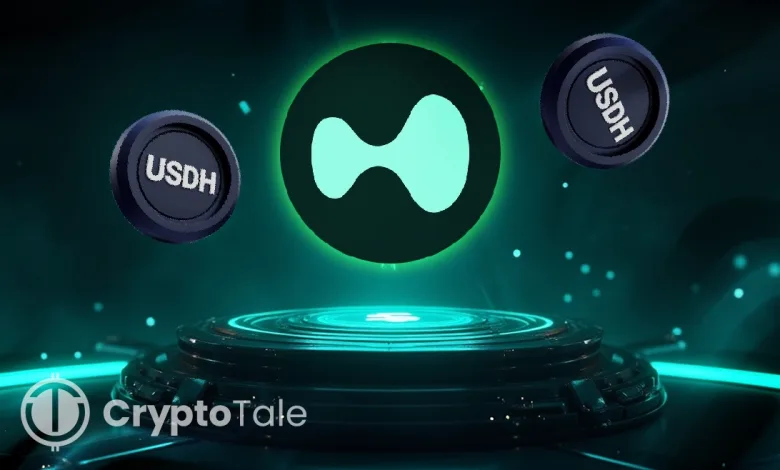Hyperliquid Opens Stablecoin Bidding as Issuers Compete for USDH

- Hyperliquid is rolling out USDH, with validator voting to select its issuer in a new process.
- Paxos, Frax, Agora, Sky, and Native Markets submitted bids with returns and bold promises.
- Circle risks losing up to $200 million yearly if USDH reduces reliance on USDC reserves.
Hyperliquid, the on-chain derivatives platform, is planning to introduce its own stablecoin, USDH, but with a unique twist. Instead of issuing it internally, the platform has invited external issuers to compete for rights through on-chain validator voting. The move has triggered a fierce contest among leading stablecoin issuers such as Paxos, Frax Finance, Agora, and others. Hyperliquid currently manages about $5.6 billion in stablecoin reserves, 95% of which is in USDC.
Circle, the issuer of USDC, invests these reserves in U.S. Treasuries, capturing approximately $220 million annually in yield. Hyperliquid, despite driving demand for this capital, has so far gained none of the returns.
This time, the platform intends to change the balance. By letting validators decide who controls USDH issuance, Hyperliquid aims to capture internal revenue while reducing dependency on external providers. With nearly $400 billion in trading volume last month, stablecoin flows are central to the platform’s liquidity. Could this experiment redefine the future of stablecoin governance?
Competitive Proposals from Major Issuers
As soon as Hyperliquid revealed its plan, leading issuers rushed to submit proposals. Paxos pledged to allocate 95% of USDH reserve interest income toward buybacks of Hyperliquid’s HYPE token. It also proposed using U.S. Treasury bills and repurchase agreements for backing, citing its track record with PayPal and Venmo integrations.
Frax Finance introduced a DeFi-native model. Its proposal promised to back USDH with frxUSD and distribute 100% of treasury yields directly to users through smart contracts, with no share retained.
Agora (with the help of VanEck, State Street, and MoonPay) proposed a coalition-type proposal. It is devoted to allocating 100% of net revenue, excluding custodial charges, to HYPE buybacks and ecosystem development.
The startup Sky (formerly, MakerDAO) came in with an innovation-driven proposal. It paid a higher yield of 4.85 percent on all USDH in Hyperliquid, which exceeded the yields in ordinary Treasuries. Besides this, it committed $25 million to ecosystem advancement, purchasebacks, and multichain subsidies on LayerZero.
Native Markets, a Hyperliquid-native project collaborating with Stripe’s Bridge platform, proposed allocating 50% of reserve income to HYPE buybacks and using the remaining 50% for USDH and platform development.
Related: Circle Expands Hyperliquid with USDC and CCTP V2 Rollout
Community Reactions and Looming Risks
The proposals have not gone unnoticed by major figures. Jan van Eck, CEO of investment firm VanEck, addressed the Hyperliquid community directly. He said, “We’d be thrilled to be a part of your community’s ecosystem. We have spoken to many of the leading HyperEVM builders and continue to look for new ways to contribute to Hyperliquid, whether that’s through this Agora proposal or something else in the future.”
He also added, “But we don’t like being gang-tackled. You wouldn’t want us as a partner if we were pushed around easily.” Currently, six organizations have filed official proposals on Hyperliquid’s Discord server. Validators will cast their votes after the platform’s next network upgrade, though a specific timeline has not been announced.Meanwhile, Circle faces serious risks.
If Hyperliquid replaces its reliance on USDC with USDH, Circle could lose $150 million to $200 million annually in revenue. The company has relied heavily on these stablecoin reserves for income. With nearly a quarter-billion dollars in potential yield at stake, the outcome of this bidding war could shape not just the future of USDH but the broader landscape of DeFi liquidity governance.




